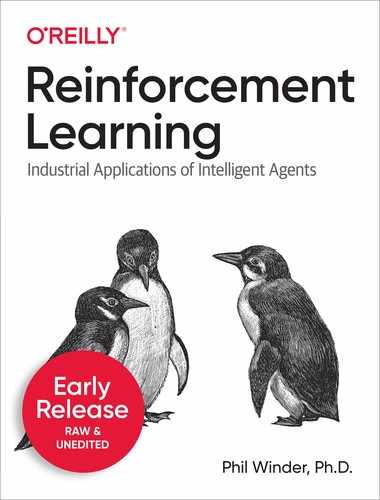Book Description
Reinforcement learning (RL) will deliver one of the biggest breakthroughs in AI over the next decade, enabling algorithms to learn from their environment to achieve arbitrary goals. This exciting development avoids constraints found in traditional machine learning (ML) algorithms. This practical book shows data science and AI professionals how to perform the reinforcement process that allows a machine to learn by itself.
Author Dr. Phil Winder of Winder Research covers everything from basic building blocks to state-of-the-art practices. You’ll explore the current state of RL, focusing on industrial applications, and learn numerous algorithms, frameworks, and environments. This is no cookbook—it doesn’t shy away from math and expects familiarity with ML.
- Learn what RL is and how the algorithms help solve problems
- Become grounded in RL fundamentals including Markov decision processes, dynamic programming, and temporal difference learning
- Dive deep into value methods and policy gradient methods
- Apply advanced RL implementations such as meta learning, hierarchical learning, evolutionary algorithms, and imitation learning
- Understand cutting-edge deep RL algorithms including Rainbow, PPO, TD3, SAC, and more
- Get practical examples through the accompanying Git repository
Table of Contents
- 1. Why Reinforcement Learning?
- 2. Markov Decision Processes, Dynamic Programming and Monte Carlo Methods
- 3. Temporal-Difference Learning, Q-Learning and n -Step Algorithms
